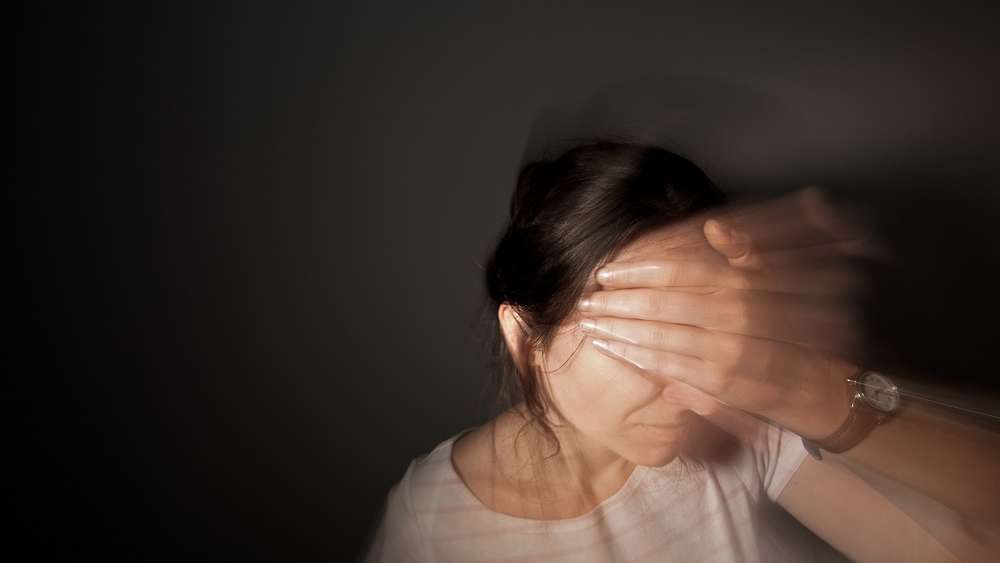Vise or jackhammer feeling - even with the symptoms there are clear differences between headache and migraine. Stress headaches describe those affected as dull and oppressive - as if they had a vise around their heads.
WHAT IS THE DIFFERENCE BETWEEN HEADACHE AND MIGRAINE?
Headaches are among the most common complaints ever. According to their own statement, 60 percent of all Germans are affected by it on occasion - one in four is even caught regularly. The symptoms can be very different, because there are more than 200 types of headaches. The two most common are tension headaches (54 percent) and migraine headaches (38 percent). Differences between the two diseases are noticeable in many ways. Find out here what typical differences there are between headaches and migraines.
What helps better: outdoor exercise or resting in the dark?
A difference between headache and migraine is the influence of exercise on the discomfort. Those affected by tension headaches usually feel better when they are out in the fresh air. This does not apply to migraineurs - on the contrary: any physical exercise worsens their condition. Unlike headache sufferers, migraine sufferers feel most comfortable when they rest and remain in the dark. With this distinction between headache and migraine, you can usually easily tell which disease is yours.
HEADACHES AND MIGRAINE DIFFERENT IN PAIN
Vise or jackhammer feeling - even with the symptoms there are clear differences between headache and migraine. Stress headaches describe those affected as dull and oppressive - as if they had a vise around their heads. On the other hand, migraine afflictions express themselves rather throbbingly. Like a thunderstorm in the head, billions of tiny needles or a jackhammer behind the temple - say patients. In contrast to tension headaches, which are usually noticeable over the entire skull, migraine usually only occurs on one side. Only one third of those affected complain of pain in the entire head.
Another difference: typical migraine companions
In contrast to headaches, migraine usually manifests itself by typical side effects such as strong sensitivity to noise and light or nausea with vomiting. The first symptoms often occur hours or days before a seizure. Migraines then often suffer from fatigue, cravings, difficulty concentrating or increased sensitivity to light and noise.
However, if you are not sure what the difference between headaches and migraines is and what you personally suffer from, a headache test can help. It contains short questions that allow a first classification. In case of doubt, always contact your doctor.
Migraines or other headaches?
A patient tries to relax during the massage and briefly forget about migraines or headaches.
In the course of their lives, 71 percent of Germans suffer from headaches, at least temporarily, that deplete their strength and sometimes limit the daily lives of those affected.1 However, this includes all sorts of forms of headache disorders. For example, many people are unaware that their condition is due to a migraine headache and not another type of headache, such as tension-type headache. What sets migraines apart from other headaches?
Migraine or tension-type headache - a quick comparison
Tension-type headache is the most common primary headache, and is therefore not the result of another disease. In this type of headache, the pain occurs in both sides of the head and is dull-oppressive or pulling, while the pain in migraine usually focuses on one side of the head and can be described as throbbing and pulsing. Accompanying symptoms such as nausea and vomiting are atypical in tension-type headache.
Headache types: very complex
Why is it so difficult to distinguish the headache types?
There are many types of headaches: The International Headache Society classifi- cation distinguishes between over 240 different types of headache, in which - as in migraines - the headache itself is the disease.
Types of headache are mutable: the frequency of pain can change over the years in one and the same patient, for example from episodic migraine to chronic migraine, or from episodic to chronic tension-type headache. Sometimes there are certain stages of life in which a new development of the previous course of the disease becomes noticeable. For example, in addition to 47 percent of migraine patients the complaints during menopause zu.
Migraine-like Headache: Headache can fit in two categories simultaneously. There are some patients in whom the symptoms can not be unequivocally classified into an "either-or-scheme". There is still no separate category for this type of migraine-like headache, in which headaches and migraines alternate, depending on the type of headache At the time of the consultation with the physician, the diagnostic assignment takes place accordingly.
Not to be forgotten are the complex causes of frequent headaches: just as there are several causes of frequent headaches (such as tension, poor posture or dehydration), migraine is also influenced by many factors, including certain foods or hormonal changes.
Migraine or other headaches: The difference is important for the treatment
For the doctor it is enormously important to distinguish or determine
- whether there is a general migraine or tension-type headache
- whether the pain has already become chronic, ie the patient is suffering from a chronic migraine or chronic tension-type headache,
- to initiate a targeted treatment. He is very helpful in this case if the patient has been keeping a headache or migraine diary for at least four to six weeks and brings it to the doctor's consultation.
Evidence of a migraine
When are the - often frequent - headaches actually a migraine? The headache, one of the main symptoms of the great hodgepodge of possible migraine symptoms, may be of varying severity in each individual. The strength of the headache does not necessarily tell you something about the headache type. In general, migraine is a combination of the following symptoms:





